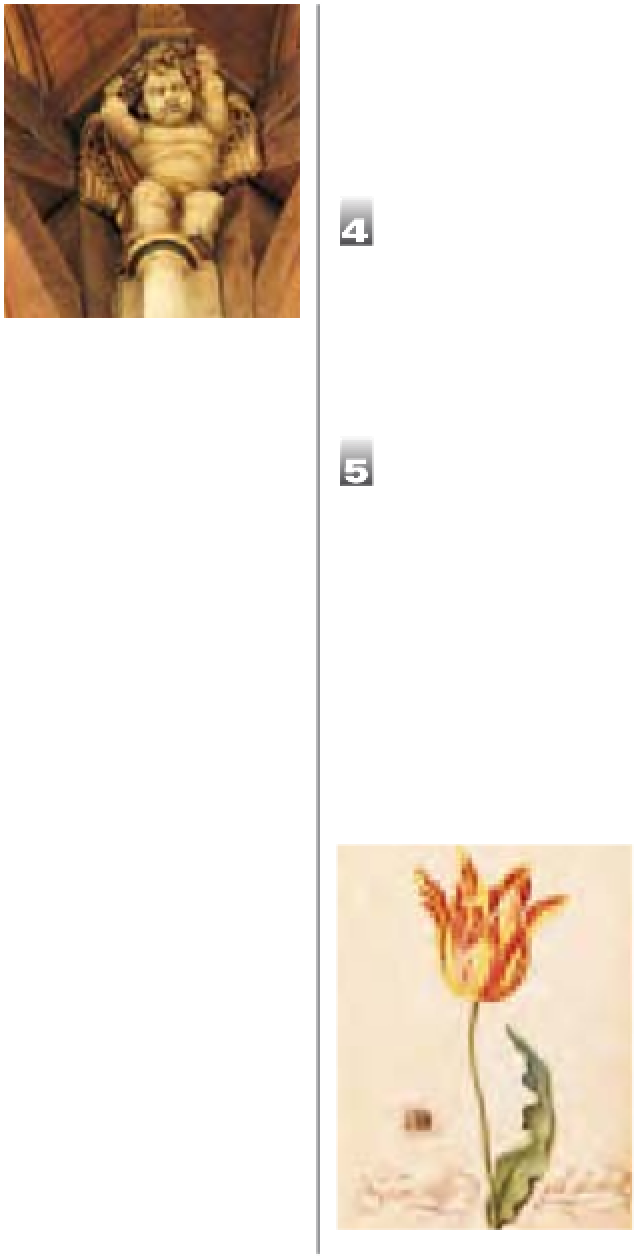Travel Reference
In-Depth Information
became the royal palace in the
early 19th century
(see above)
, it
was given the new, elevated title
of national church of the
Netherlands, and has been the
setting for the coronation of
every Dutch monarch since then.
Amsterdams Historisch
Museum
An excellent place to start a visit
to Amsterdam, this museum
chronicles how a tiny fishing
village on the Amstel river grew
into one of the wealthiest and
most beautiful cities in the world
(see pp24-7)
.
Gilded cherub, Nieuwe Kerk
Dam Square
Amsterdam's main square is
named after the dam on the River
Amstel, around which the city
grew. By the 17th century, it had
become the focus of the Dutch
trading empire
(see pp34-5)
.
Begijnhof
A charming and secluded
courtyard of houses surrounding
a tranquil garden in the centre of
the city, the Begijnhof was
established in the 14th century
as a sanctuary for a lay Catholic
sisterhood
(see pp22-3)
.
Koninklijk Paleis
Supported by a staggering
13,659 wooden piles, Jacob van
Campen's Classical building
occupies one side of Dam
Square. Designed as the
Stadhuis
(town hall), it was
transformed into a Royal Palace
in 1808 by King Louis Bonaparte.
Although it is still used for
official functions, such as the
wedding reception of Crown
Prince Willem-Alexander in
February 2002
(see p39)
, the
present royal family live
elsewhere. The interior is
breathtaking
(see p34)
.
Museum Amstelkring
This canal house turned
museum, with its sober
decoration and delightful secret
Catholic church, plunges the
visitor back into the Golden Age
(see pp20-1)
.
Nieuwe Kerk
Wealthy merchant banker
Willem Eggert donated his
orchard as a site for this Gothic
church, as well as a large sum of
money for its construction. It
was consecrated to Our Lady
and St Catherine, but has only
ever been called the Nieuwe
Kerk - to distinguish it from the
Oude Kerk. When the town hall
Amsterdams Historisch Museum collection
83








